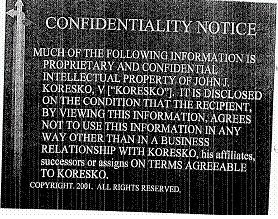Teleflex, Inc., et al. v. KSR International Co., 04-1152, (Fed Cir. 2005)
NON-PRECEDENTIAL. The Federal Circuit vacated summary judgment of obviousness and remanded. When obviousness is based on the teachings of multiple references, the movant must also establish some ‘suggestion, teaching, or motivation’ that would have led a person of ordinary skill in the art to combine the relevant prior art teachings in the manner claimed.” The Federal Circuit said that the reason, suggestion, or motivate to combined prior art references may be found explicitly or implicitly (1) in the prior art references themselves, (2) in the knowledge of those of ordinary skill in the art that certain references, or disclosures in those references, are of special interest or importance in the field; or (3) from the nature of the problem to be solved, leading inventors to look to references relating to possible solutions to the problem. It is important that there is not just a motivation to combine the references, but to combine them in the particular manner claimed. The Federal Circuit said that the district court found obviousness without making findings as to the specific understanding or principle that would have motivated one with no knowledge of the invention to make the claimed combination, and therefore vacated the reversed.
NOTE: Along the way the Federal Circuit reminded everyone that “Clear and convincing evidence exists when the movant ‘place[s] in the mind of the ultimate fact finder an abiding conviction that the truth of its factual contentions are ‘highly probable.”


